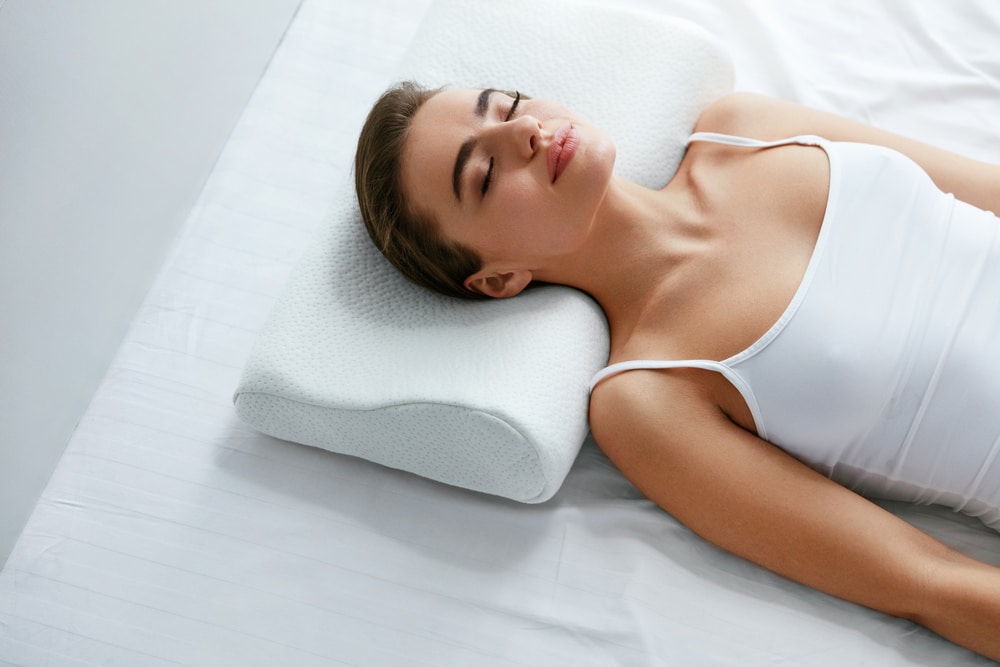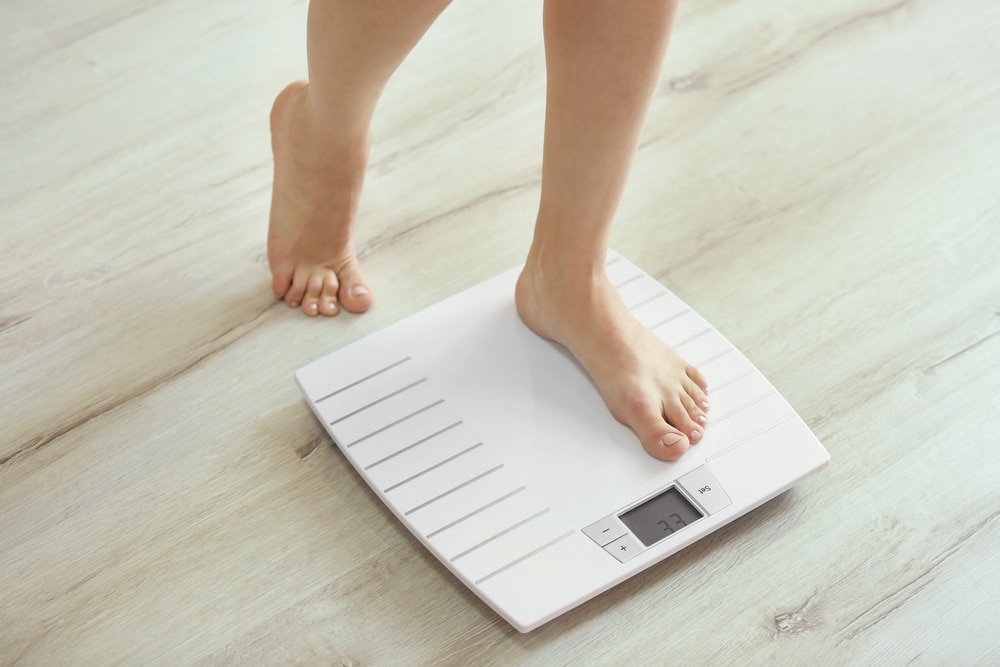Last Updated on
Sleep is so important for your health, functioning and happiness. When you don’t get enough shuteye, you feel cranky, irritated and unhappy the following day. Orthopaedic pillows offer superior support to lessen back and muscle pain while you sleep at night. Here’s how to use an orthopaedic pillow and everything else you need to know.
Who Are Orthopaedic Pillows For?
Orthopaedic pillows are designed for people from all walks of life. This is especially true for those who suffer from sleeping or are looking for ways to improve their sleep quality. These pillows are made to reduce the amount of pain in your head, neck, and shoulders when you wake up. They work by providing correct alignment to relieve pain while you sleep.
So if you often wake up each morning with a stiff neck, painful back, or a headache, your pillow could be to blame. Don’t suffer any longer, and invest in a contour pillow to make your sleep more peaceful and to allow you to wake up feeling rejuvenated and ready for the day ahead.
How to Use an Orthopaedic Pillow
Position the contour pillow with the grooves and curves facing upwards, and position the pillow so the two humps are facing the bottom of the bed. Hold your head straight on the orthopaedic pillow rather than slumping your head into the material, as this can cause you to snore.
Back Sleeper
If you usually sleep on your back, position the pillow with the slimmer side running in line with the head of the bed. The largest point of the pillow should be positioned underneath the curvature of your neck, with your neck resting on top of the hump.
Side Sleeper
Position the largest end of the memory foam pillow underneath the curvature of your neck, ensuring that the pillow is close to the top of your shoulder. This position will support your neck while keeping your muscles relaxed during your sleep.
Stomach Sleeper
We don’t recommend using a memory foam pillow if you sleep on your stomach because the thick cushioning can create an unnatural arch in your neck while you sleep while also putting pressure on your spine. Instead, consider a thinner pillow to help you get a restful sleep while also providing proper alignment.
The Benefits of Using an Orthopedic Pillow
Not sure if orthopaedic pillows are for you? Here are some ways they can provide quality sleep.
Reduces Neck Pain and Improves Your Breathing

One of the biggest benefits of contour pillows is the improvement you’ll see in your breathing behaviour—especially if you have sleep apnea.
In particular, a contour pillow allows you to sleep in a healthy and comfortable position to maintain a healthy breathing pattern. This is because when you sleep in an unnatural position, your brain, veins, arteries, spine, nerves, and airways are all affected.
Fortunately, a memory foam contour pillow improves your ability to breathe while you sleep and for the following day by cradling your neck and keeping it and your head in a neutral position. As a result, you’re less likely to encounter neck pain the following day while also enduring a comfortable, great night’s sleep.
Adjusts to the Curves of Your Body
Additionally, a contour pillow provides maximum support for your body, even during different sleeping positions. This extra support on the natural curvature of your head and neck keeps your spine straight and in its natural alignment for maximum comfort. These pillows are particularly important and helpful for keeping your back aligned with its natural curve during any sleeping position.
Uninterrupted Sleep
There’s nothing worse than interrupted sleep; you can’t concentrate or enjoy the day that follows. Fortunately, a contour memory foam pillow provides pain relief and neck support and minimises joint pain for excellent sleep quality.
Orthopaedic pillows also keep motion disruption to a minimum, so you’re less likely to toss and turn through the night, helping you to wake up feeling refreshed.
No Dust Mites
Dust mites are a concern for most people and can result in itchy eyes, a runny nose, rash, asthma and more. In good news, these mites can’t survive on orthopaedic pillows, making your bed a more hygienic space.
Maximum Comfort
When you’re trying to fall asleep at night, it’s essential that you feel comfortable in your bed. A contour pillow moulds to the shape of your body so you can fall asleep in less time. At the same time, offering back support, helping with poor posture, and preventing a buildup of body heat.
How to Choose the Right Contour Memory Foam Pillow for You
Below are some important factors to consider to help you choose the right orthopaedic pillow for your needs and budget. Ensure that you keep these in mind during the buying process.
Your Favourite Sleeping Position
The first thing you’ll want to do is find out what your favourite sleeping position is. Think about the last position you get into before you’re about to drift off at night. It’s important to know your body positioning while you sleep because this will affect the pillow firmness you need.
For example, side sleepers will require a contour pillow that’s firm, whereas back and stomach sleepers require a thinner pillow. Back sleepers (which is the most healthy position to sleep in for back and neck pain) should consider a thin pillow to cradle and cushion your body.
Materials
Contour pillows are designed to adapt to your body shape and come with various materials for filling. Healthier than most pillows on the market, not all therapeutic pillows are completely free of toxins. So consider materials like bamboo to avoid consuming toxins while also making the pillow safe to use around those with allergies.
Size
Standard size will suit most adults, but maybe you prefer to sleep on a smaller pillow or are looking for a portable memory foam pillow to take on the go with you. In addition, bear in mind the size of your bed to ensure that your pillow fits comfortably or doesn’t appear too small for your bedroom.
Firmness
The firmness you choose is mainly down to personal preference. If you know that you prefer a softer pillow, for example, then ensure that you choose a contour memory foam pillow that’s in line with that. It would help if you also considered your weight because the heavier you are, the dense your pillow should be.
Why Is a Pillow So Important?
A comfortable environment affects your sleep, but what’s the big deal with choosing the right memory foam support pillow? Well, a pillow that’s too thin can bend your neck down at an awkward angle. If your pillow is too thick, it can bend your neck upwards. Either way, both positions can contribute to neck pain.
Additionally, a soft pillow is more likely to collapse when you lay your head on it, resulting in poor support. Plus, a soft pillow will change its shape throughout the night, making it more difficult to obtain a comfortable sleeping position when you move into a new position.
Is It Okay to Share Your Orthopaedic Pillow?
Ideally, it would help if you did not share your orthopaedic pillow with others. Why? Because the memory foam filling is designed to conform to the shape of your body, and sharing it with other people means that its shape won’t be unique to you anymore.
The beauty of memory foam grows and adapts to your body and features a contoured design that won’t be the same for another person. Instead, we suggest having individual pillows to support individual bodies.
Get Your Support Pillow Today
In summary, most orthopaedic pillows are designed for various sleeping positions, but you should purchase a thickness and material based on your sleeping comfort.
Knowing how to use an orthopaedic pillow is just as important as knowing which one to buy, so do your research if you affect your sleeping for the worse. If you have experience using memory foam pillows, share your recommended brands in the comments.
Amy is a U.K.-based writer and editor with a penchant for helping consumers find the best home products for their needs, as well as providing easily digestible guides for living better at home. Her dedication to her work means she can usually be found elbow-deep in research or hunting down samples of the latest and greatest on behalf of her readers.
An avid DIYer herself, Amy’s passion lies in teaching others how they too can achieve their dream homes by tackling some of those pesky projects themselves! Whether it’s building furniture from scratch or turning an old dresser into a coffee table, Amy is always happy to share what she knows about making your house feel like home without spending a fortune.



